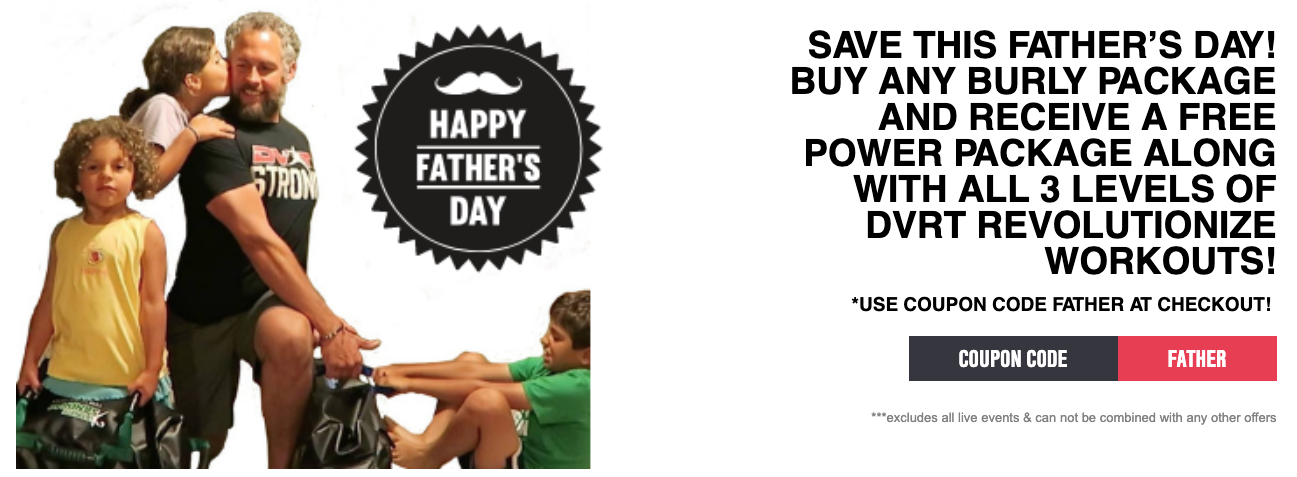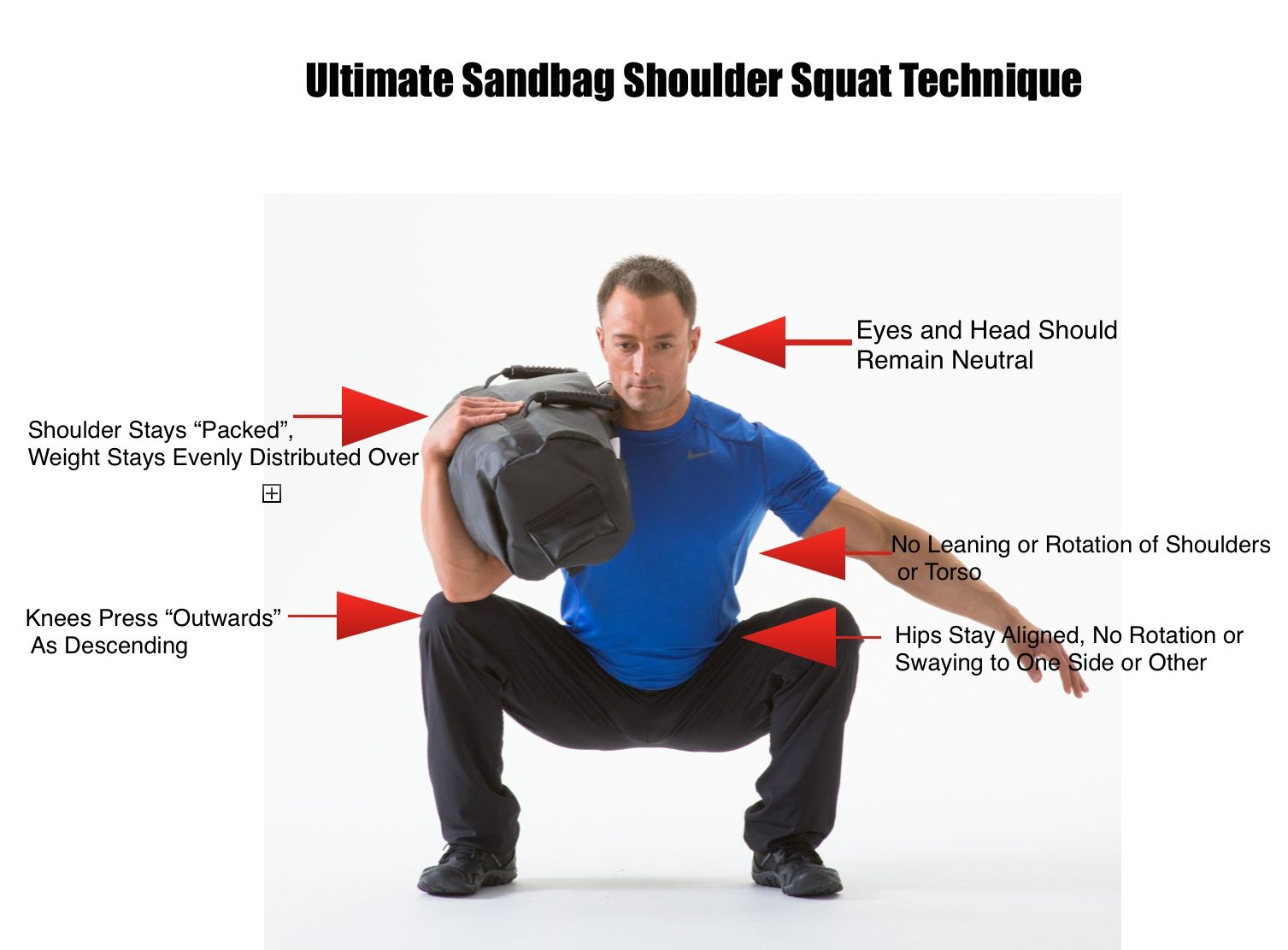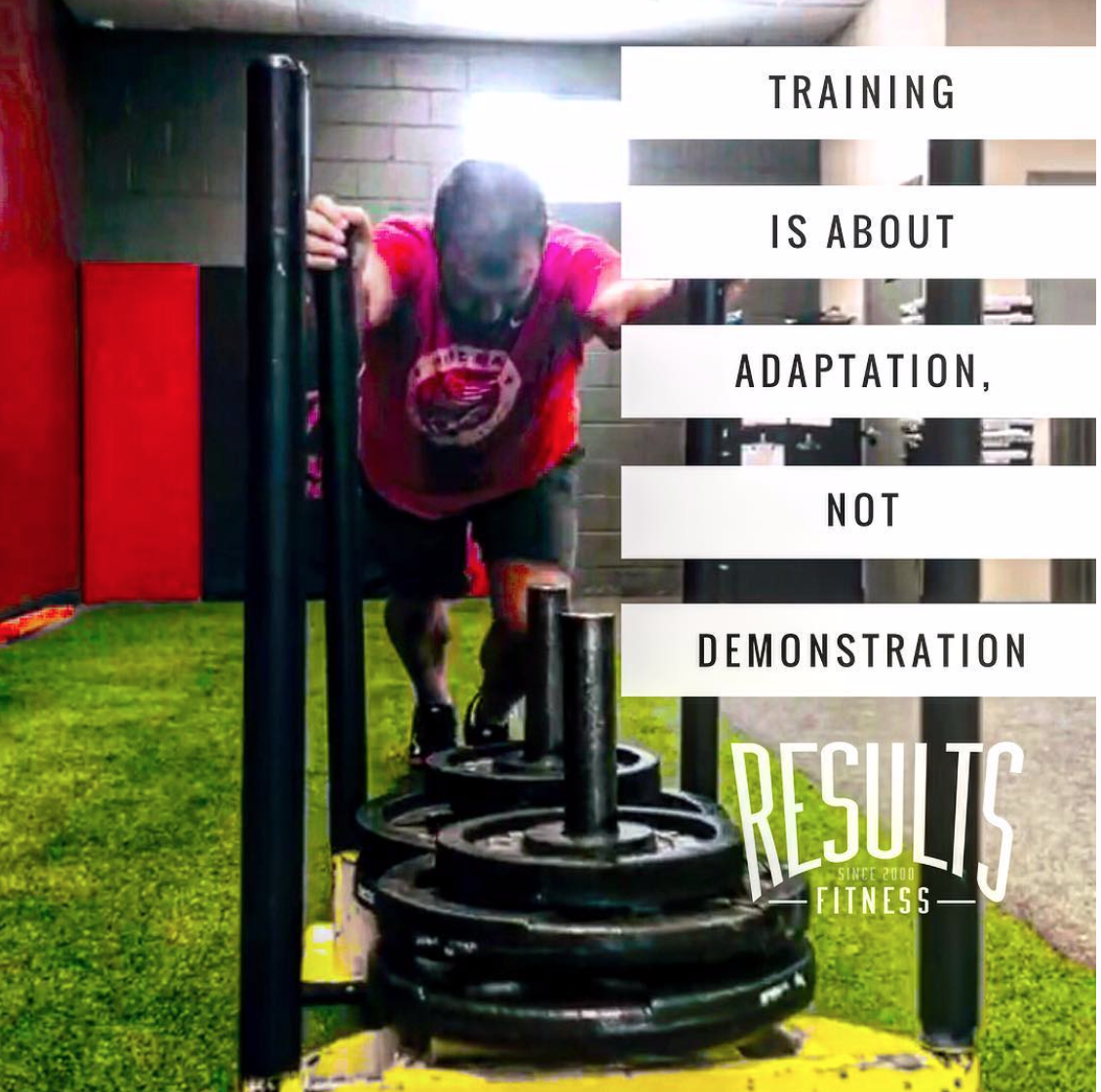Functional Training Goes HEAVY!!
2019-05-31

Let’s face it, both functional training and training heavy get bad rap. Don’t feel too sorry for either, sometimes, well often times, it is well deserved. However, both functional training and heavy strength training should have more in common that most think!
I know most people think of functional training as “goofy” or “circus tricks” in the gym. Drills where no one really knows what is being trained, but it somehow falls under the “functional” umbrella. Heavy training is not much better as it is often a way to prove something to someone. Especially nowadays the use of heavy training is to try to show off to followers, get likes, and every other silly reason. We suspend the use of good technique because things get “heavy.”

I hear this all the time and makes for a fun meme, but not thoughtful workouts.
In both cases we can actually benefit greatly from the use of progressing to heavier exercises and increase our understanding of functional training. Heavy is simply one of the many variables we have to challenge our body to adapt (there are like 7-8 others too!). What makes training heavy unique is that it can expose bad movement habits, lack of building a good foundation of stability, mobility, and strength, as well challenge our movement accuracy (something pretty unique to DVRT functional training styles).
Same can be said with the functional training, it is an ACTUAL methodology and not just a philosophy. Where do we start? The easiest place is focusing on movement patterns and I love what physical therapist, Gray Cook says in that movement patterns are the combination of our hardware (the parts of our body) and software (our nervous system). Funny people think functional training doesn’t train muscles, the WHOLE point is we train more muscles by focusing on movement patterns.

When we combine good functional training and progressive resistance we see all these elements of amazing training come together. Of course at DVRT we are built on foundations so it isn’t just banging your head to going heavier, sometimes you learn about what you haven’t been doing as you push yourself to new levels. Here are some examples!
Make Your Squat 3-D
Probably the most iconic “sandbag exercise” is the Shoulder Squat. Sadly, most overlook the unique value of this drill and do it horribly wrong! The entire point of this functional training drill is to move up and down without looking as though you are being pulled to the side. This actually makes your squat more 3-D.

Meaning, as you move up and down you have to resist forces that are trying to move you out of alignment. That means training your stabilizers and big muscles at the same time. Getting a combination of stability and strength at once. However, as Cory Cripe shows, sometimes the best way to build a better Shoulder Squat is to remember the foundation in which they are built! When we can’t stabilize in the squat from side to side or rotation we get an idea that our core might be limiting even our lower body strength!
Shoveling (hip hinge)
While Clean and Press USUALLY gets a lot of our attention with heavier Ultimate Sandbags (because they expose so much) higher levels of training are our goal with drills like Shoveling. What makes a drill like Shoveling so unique is the fact we are working in the transverse plane.
Rotation is the most complex of the three planes of motion in which we move. Rarely do we train it with the focus of strength that we do moving up and down, or even side to side. Working up to heavier Shoveling helps us see the important of creating force from the ground up, keeping tension in the handles, balancing relaxation and tension of the whole body which is the “pulse” that Dr. Stuart McGill references in how we create incredible real world power!
Of course not everyone can go into heavy Shoveling because the projection of load creates A LOT of force coming back down onto the body. What DVRT UK Master, Greg Perlaki, shows is we can keep the weight closer and practice the footwork and these other functional training qualities so we can progress to Shoveling.
My Favorite Pressing
Most of dynamic pressing in DVRT is focused around going overhead. For one, it is the greatest combination of stability, mobility, and strength of the entire body. Second, it isn’t great to bench press the Ultimate Sandbag, sure you can do it, but it gets cumbersome and hard to progress. However, we do a lot of horizontal work through our lateral drag progressions which is why I said “dynamic pressing.”
Two forms of pressing that I think people don’t use enough in DVRT, especially with heavier loads is Sprinter Stance pressing and Half Kneeling Arc Pressing. The Sprinter Stance is one of my favorites because it teaches needing to use the ground and makes you slightly unstable so you do become more 3-D in your training. It is a perfect balance of stability training while still allowing you to train some good weights!
https://www.instagram.com/p/BrgN4q_h8TR/
Arc Pressing always gets overlooked as just a corrective drill and I get it. Some people don’t have long arms and can find it challenging (don’t worry you can still press from the fists half kneeling), however, if you can, using the Arc Press is HUGE especially half kneeling. That is because being in half kneeling makes us unstable and check out each individual hip by themselves. We learn what it means to press with the feet and how grip and core stability play paramount roles in learning to press correctly.
https://www.instagram.com/p/BuHTmJphypJ/
These are a few examples of how we can use training heavy with functional training to not prove anything, but improve how we move and perform. When you spend time on building good foundations and not forgetting the priority of good movement, you will find that “heavy” training can provide so much more value than a boasting social media post????. As fitness expert, Alwyn Cosgrove says, “it is about adaptation, not demonstration!”
Only a few more days to build your complete gym for a VERY special deal! When you invest in our Burly Ultimate Sandbag you will get a FREE Power Ultimate Sandbag and a year’s worth of programs to help you from foundation to advanced training! Just use coupon code “father” HERE

© 2025 Ultimate Sandbag Training. Site by Jennifer Web Design.






